Sunflower Seeds – A Tiny Yet Nutritious Snack!
By Heide Kennedy, Arizona Farm Bureau Communications Intern
Whenever my family and I go on road trips or to livestock shows, one snack that we usually always have with us is sunflower seeds. My brothers and I love trying all the different flavors of seeds that come in those little bags from the convenience stores, and so far, our two favorite flavors are dill pickle and black pepper.

Whether you like the flavored seeds or the plain and salted ones, there are a surprising number of health benefits packed into each little seed.
According to MindBodyGreen, sunflower seeds are a great source of vitamin E and antioxidants, fiber, and selenium, and they are also a great source of plant-based protein, containing about 5 grams per handful. Registered dieticians Abby Cannon and Molly Knudsen note that sunflower seeds also provide the following health benefits:
- Help to maintain healthy cholesterol levels
- Are a source of plant-based protein
- They keep your immune system healthy
- Help to reduce inflammation
Luckily, these little seeds are super versatile, so it’s easy to use them in different recipes and reap the health benefits that they offer. Obviously, you can snack on them by themselves, either plain or seasoned like my brothers and I do, or you can use them in various recipes. Toss them on top of salads or grain bowls for a crunchy topping. Or you can use them in place of pine nuts in pesto or mix them into granola or cereal. So, consider choosing sunflower seeds as a midday snack, or using them in your next recipe! They’re delicious!
Did you know that sunflower oil is also incredibly healthy? Check out this related article from Fill Your Plate!
No Agriculture, No Super Bowl!
By Heide Kennedy, Arizona Farm Bureau Communications Intern
The Super Bowl is right around the corner, and many fans are already preparing for parties and tailgates to hang out with friends and family as they cheer on their teams. While I am definitely not an avid football fan, there is one player that I will be rooting for! That player would be agriculture! Yep, you read that right! Agriculture plays a huge role when it comes to football, and without it, football wouldn’t even exist! 
The Super Bowl, or any football game for that matter, would be no fun at all to watch if there wasn’t a football! NFL footballs are made from cowhide, and according to Texas Farm Bureau, a single cowhide provides enough leather to make 20 footballs!
Football would be no fun to play if it weren’t for the grass that covers the field. Even though we often don’t associate grass with agriculture, it takes a grower to plant the grass seed and care for it to produce the sod needed to cover football fields!
Agriculture is also essential for the jerseys that both players and fans wear on game day. Those jerseys that are worn are made from cotton, which is a fiber that we grow a lot of here in our home state of Arizona!
Finally, the Super Bowl wouldn’t be as enjoyable if it weren’t for all of the delicious foods that are served at tailgates and parties! If it weren’t for agriculture, we wouldn’t be able to enjoy all the hamburgers, hot dogs, brats, or any of the other foods and drinks that are served!
Who knew that agriculture played such a huge role in football? As you watch the game, spend time at a party with friends and family, and enjoy all the game day foods, remember that it didn’t just appear out of nowhere. Farmers and ranchers all over the United States made it possible for us to enjoy all the fun that comes with the Super Bowl!
To learn more about Arizona agriculture, check out the Fill Your Plate blog and Arizona Farm Bureau’s website!
Breakfast can Provide You with Fuel for Your Day!
By Heide Kennedy, Arizona Farm Bureau Communications Intern
What is the first thing that you do when you get out of bed in the morning? Is it a cup of coffee? A morning walk? Do you begin your day by making yourself a nice, hearty breakfast? Or, maybe you’re like me and rarely have time for any of those things and so you just head out the door on your way to work. Whatever the case may be, making sure that you get a good breakfast may be beneficial to your health.

According to registered dietician Supriya Lal, eating breakfast helps your body to keep your blood sugar levels stable, provides you with energy for the rest of the day, and regulates your hunger. This is especially important for those with diabetes or other health issues. But not just any breakfast will do in the morning. She notes that balanced breakfasts that are comprised of fats, carbohydrates, and protein are the best to ensure that you are fueled for the rest of the day. Unfortunately, that means that sugary, carb-loaded breakfasts like doughnuts, muffins, or sugary cereals are out of the question.
Some suggestions for balanced breakfast foods include eggs, whole grain bread, sausage, bacon, oatmeal, nuts and nut butter, Greek yogurt, fruits, and even some veggies! Try combining these foods to give yourself some diversity in the mornings. My personal favorite is making omelets with different combinations of veggies inside, such as mushrooms, and spinach, and then topping them with sliced avocado!
So, try making breakfast a priority and see if it helps you to feel more fueled for your day! A cool little tip is that here in Arizona, we have access to so many locally grown and raised breakfast foods! Some of the food items that you can get locally are eggs, dairy products, meats, and a wide variety of fruits and veggies! Check out the Fill Your Plate website for more information on where and how to find locally-grown products!
Cabbage Provides a Punch of Health Benefits
By Heide Kennedy, Arizona Farm Bureau Communications Intern
Kimchi, coleslaw, sauerkraut, stir-fry. What does each of these foods have in common? They’re all made with cabbage! While it’s not the most attractive vegetable, cabbage is a super versatile veggie that can be used in so many different dishes, and to make it even better, it has a surprisingly high number of health benefits. It is also a veggie that we produce a bunch of right here in Arizona! Here are some of the specific nutritional benefits of cabbage. 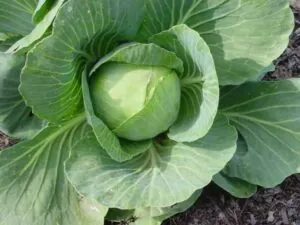
According to the Cleveland Clinic, a one-cup serving of cabbage provides you with 54% of the recommended daily value of vitamin C, 85% of the recommended daily value of vitamin K, more than 2 grams of fiber, and 1 gram of protein, along with other various vitamins and minerals.
Registered dietician Julia Zumpano says that due to the nutrient content of cabbage, this vegetable can have any of the following health benefits.
- Maintains your strength
- Improves your digestion
- Reduces inflammation
- Protects heart health
- Lowers blood pressure
- Lowers cholesterol
- Promotes healthy bones and blood clotting
- Reduces cancer risk
With all those great health benefits and its versatility, cabbage is definitely a veggie to incorporate into your meals. For some recipe ideas, consider these recipes that use cabbage from Fill Your Plate!
Looking to find locally grown cabbage? Check out this farmer’s market locator from the Fill Your Plate website!
Quinoa – The Tiny Grain with Big Nutrition
By Heide Kennedy, Arizona Farm Bureau Communications Intern
Quinoa, the teeny tiny little grain that packs a huge punch of nutritional benefits. It has also become super trendy in recent years, and it’s easy to find so many different recipes that use it. Here, we break down just how nutrient-filled this little grain is, as well as how it can actually help to prevent type 2 diabetes. 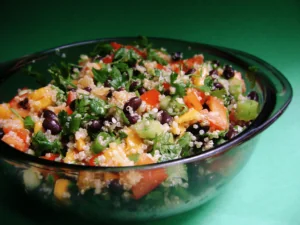
According to Dr. Nicole Avena, quinoa is one of the few whole grains that is also a complete protein as well. Being a complete protein basically means that it contains all of the 9 essential amino acids. Because of its high fiber and high protein content, quinoa is great for building and repairing muscles, increasing satiety, and slowing your digestion, which in turn slows your blood sugar release.
But those nutritional benefits of quinoa aren’t all that it boasts. According to a new study, regularly consuming quinoa has been shown to help prevent the development of type 2 diabetes. Researchers compared the blood sugar levels of those who ate regular carbohydrates with those who ate quinoa instead. Those who ate quinoa reported having fewer blood sugar spikes than those who ate regular carbohydrates. This can be attributed to the high fiber content, which blocks the rise of blood sugar. Also, quinoa is high in protein, which helps to combat the blood sugar spike that results from eating carbohydrates as well.
Who knew that there could be so much nutrition contained in such a small little grain? Consider incorporating more quinoa into your diet, not only because it can provide you with so many nutritional benefits, but it is also super delicious in my opinion!
For more nutrition articles, check out the Fill Your Plate blog!
Are You Feeding Your Bacteria Enough?
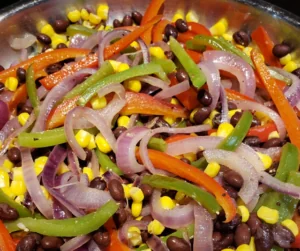 By Heide Kennedy, Arizona Farm Bureau Communications Intern
By Heide Kennedy, Arizona Farm Bureau Communications Intern
Did you know that when you eat, you are not just feeding yourself? In fact, you’re feeding a crowd of millions of little bacteria living in your stomach that make up your gut microbiome. These bacteria are incredibly vital to having good overall health so feeding them well is important.
So, what should you be feeding your gut microbiome? According to Tim Spector, professor of genetic epidemiology at King’s College London, eating a variety of high-fiber and nutrient-dense foods has shown to be the best option for keeping a healthy gut microbiome. Specifically, it’s the soluble fiber in the foods that you consume that these gut bacteria feed on, where they convert it into short-chain fatty acids. These help to fight inflammation and regulate your appetite.
On the flip side, a study done last year found that people who eat a diet mainly comprised of junk foods (think highly processed, high in sugar, salt, and artificial ingredients, and low in fiber) have a greater number of bad and harmful bacteria growing in their guts. This contributes to a greater risk of heart disease, obesity, and diabetes.
With that being said, are you now looking to add some more fiber to your diet to keep those gut bacteria thriving and healthy? If so, aim to incorporate a variety of nuts, plants, and fermented foods into your diet. Fruits, vegetables, sauerkraut, kombucha, and trail mix are just a few examples. What makes it all the better is that these foods are all super delicious as well.
Check out these past Fill Your Plate articles about fiber!
Non-Starchy Veggies Offer Healthful Fiber, Nutrients – Fill Your Plate Blog
Need More Fiber? Add Nuts to Your Diet – Fill Your Plate Blog
A Dietician’s Perspective on Potatoes
By Heide Kennedy, Arizona Farm Bureau Communications Intern
Did you know that there is a vegetable with over 4,000 varieties that are grown in all 50 states? That vegetable would be the potato! Potatoes are a very popular veggie and it’s easy to see why because they are so incredibly versatile when it comes to flavoring and preparing them. There is a lot of debate as to whether or not they are actually healthy for you, so let’s see what a dietician’s perspective is on the issue. 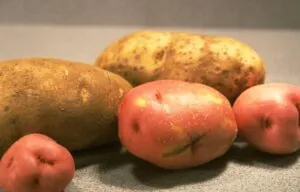
According to registered dietician Becky Kerkenbush, potatoes are actually very good for you. But it just depends on how they are prepared and served. She says that at their base, potatoes are very high in fiber, vitamins C and B6, as well as potassium. But these healthy potatoes are easily made very unhealthy when turned into French fries, potato chips, or baked potatoes loaded with bacon, cheese, sour cream, and butter.
For a bit of Arizona agriculture trivia, potatoes grown in Arizona are harvested in spring and early summer.
You may be wondering, what are some healthier ways to prepare and serve potatoes? Kerkenbush suggests using dry methods when cooking them, meaning you bake them, roast them, or grill them, as this preserves the most nutrients.
Boiling potatoes actually causes them to lose some of their nutrients. She also suggests serving them with healthier toppings and seasonings. For example, you can cube them and toss them with some olive oil and herbs. Or, for a loaded baked potato, swap the sour cream for Greek yogurt, as it has less fat and more protein and still gives a similar tang and creaminess.
So, it turns out that potatoes are healthy after all! Considering that you prepare them well and serve them with healthy toppings of course!
For some healthy recipes that use potatoes, check out the recipes page on the Fill Your Plate blog!
Convenient and Healthy Snacks For When School is Back in Swing
By Heide Kennedy, Arizona Farm Bureau Communications Intern
Christmas break is over, and now the kids are back in school. After a break that was probably filled with lots of Christmas candy and delicious holiday baked goods, now is the perfect time to begin reintroducing healthy snacks for them to take along to school. Registered dietician Nina Struss offers tips on how and what to prepare for quick, healthy snacks.

In terms of what to prepare for snacks, she suggests pairing protein and fiber together to help keep your kids feeling full and satisfied until the next meal. Some ideas are popcorn and cheese sticks, fruit slices and nut butter, carrots and hummus, or even a hard-boiled egg and some fruit. My personal favorite is slices of ham or turkey, and a bag of carrot sticks!
Her preparation suggestion is to wash and cut all your fruits and veggies as soon as you return from the store. That way they are already ready to just grab and go or pull out of the fridge whenever a snack is needed. She also mentioned that prepackaged versions of these healthy snack foods can be useful when you’re in a rush.
Keeping your kids well stocked with healthy snack options will help to ensure that the transition from Christmas break back into the next school semester is a success!
Check out these past articles from Fill Your Plate!
Top 5 Healthy Snacks for Back to School
Juicing – Is it Worth It?
By Heide Kennedy, Arizona Farm Bureau Communications Intern
Juicing fruits and vegetables has become increasingly popular lately, especially juice cleanses. These juices are touted as being incredibly good for your health as they are supposed to aid in digestion, cleanse toxins from your body, make you lose weight, boost your immunity, and more. So, are these juices worth it? 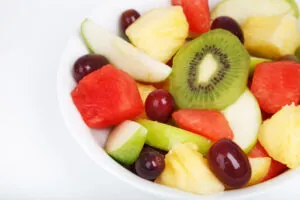
According to the Mayo Clinic, drinking juices is no healthier than just eating that piece of fruit or vegetable. While you do get the majority of the nutrients from the fruit or vegetable from juice, you are losing all the beneficial fiber that is in the flesh of the fruit or vegetable.
With that being said, if you are looking to reap the most benefits from the foods that you eat, juicing might not be the best option. But if you still enjoy drinking your fruits and vegetables rather than eating them whole, consider blending them into a smoothie or puree. That way it is still drinkable, and you’re getting both the nutrient-dense juices and the healthy fiber from the flesh.
For more health-related articles check out the Fill Your Plate blog!
Foods To Ensure a Good Night’s Rest
By Heide Kennedy, Arizona Farm Bureau Communications Intern
We all know how important getting a good night’s sleep is. From repairing your body’s cells from use during the day to energizing us for the next day’s activities, to reducing stress, good sleep does a lot for our bodies. Besides sticking to a regular sleep schedule and getting a full 8 hours of sleep, there are actually certain kinds of food that aid in making sleeping soundly at night much easier. 
According to Registered dietician Kristin Kirkpatrick, consuming foods that help to calm the body and increase your serotonin levels. The Mayo Clinic notes that research shows that diets that are high in fiber and low in saturated fats and simple carbohydrates promote more sound sleep. With that being said, there are 6 key food options that can contribute to a better night’s sleep.
- Complex carbohydrates
- Lean proteins
- Healthy fats
- High magnesium foods
- Soothing beverages, such as herbal teas.
- Fresh herbs
Incorporating some of these into your evening meal or pre-bedtime snack can help to promote a more restful night, which in turn promotes overall health.
For more articles about sleep, check out this collection from the Fill Your Plate blog!
Sweet Corn Has its Fair Share of Nutritional Benefits
By Heide Kennedy, Arizona Farm Bureau Communications Intern
Corn on the cob has long been a staple at most summer barbecues and cookouts, and rightfully so. Sweet corn is at its best during the summer months for most of the United States. In Arizona specifically, sweet corn season in the Valley lasts from May to early July, but it is extended into September because of the cooler climates up north and in southeast Arizona.
Corn has gotten somewhat of a bad rap since kernels can pass through us intact. But, in an article that CNN published, Registered Dietician Julia Zumpano notes that corn is actually very good for you and does have many nutritional advantages. Corn is high in the two carotenoids lutein and zeaxanthin, which might help lower the risk of macular degeneration and cataracts. Corn also is a source of B vitamins, magnesium, and potassium. Something interesting that the article mentioned is that corn is high in antioxidants, and the darker the color of the corn, like blue or red, the more pigment it has, and the more antioxidants it has.
Another interesting fact about corn that I didn’t know was that because of how high in fiber it is, and because our bodies don’t digest fiber, we actually don’t digest half of the carbohydrates that make up that corn. So, what that means is that when we eat corn, we are consuming carbs, but our bodies aren’t using them as they would usually use carbs because they can’t break them down.
So, corn does actually have some nutritional value to it! And it provides us with a way to eat carbs without really increasing the number of carbs that we are consuming.
Arizona grows a lot of sweet corn, so it is easy to find locally grown corn here in the state! To find out where you can get locally grown corn, or to find recipes that use corn, check out the Fill Your Plate website!
Tips for Reducing Carb Cravings
By Heide Kennedy, Arizona Farm Bureau Communications Intern
When I’m feeling stressed, I often find myself reaching for a carb-filled snack such as a bag of greasy popcorn or tortilla chips for consolation. And if we’re honest, just two or three chips is not enough to satisfy that craving. It feels as though once you get started on a few chips, you just keep going. Come to find out, one of the biggest reasons that it is so easy to binge eat carbs has to do with the quality of those carbs.

According to a recent article from the Cleveland Clinic, the difference lies in whether the carbs are refined carbs or high-fiber carbs. Registered dietician Anna Taylor notes that “When we consume a lot of these refined carbs, those foods are more quickly digested and absorbed into the body, causing a spike in blood sugar. That spike, in turn, triggers hunger that causes us to, yep, reach for those refined carbs again and keep the cycle going.”
So, does that mean that we should completely eliminate all refined carbs from our diet and throw away every bag of chips in the pantry? Luckily, the answer is no!
One of the ways that you can still enjoy carbs is by choosing carb sources that are higher in fiber because those carbs take longer for your body to digest. This will leave you feeling more satisfied for longer periods of time, and help to reduce binge eating. Choosing high-fiber foods can be as easy as cutting out white grains and switching to whole grain foods and reducing refined sugar intake. Or, you can explore other high-fiber options such as beans, chickpeas, lentils and quinoa.
For recipe ideas that feature many of these high-fiber carb sources, check out the recipe database on Arizona Farm Bureau’s Fill Your Plate Blog.
The Importance of Healthy Lunches During the Workweek
By Heide Kennedy, Arizona Farm Bureau Communications Intern
Let’s be honest. For those of use who work, it can be hard to find the time to either make and take, or go out and buy meals during work days. I know that I personally find myself skipping breakfast almost every day, and even lunch sometimes on the days that I work. But, while skipping meals might save us some time, it can negatively impact how we perform throughout the rest of the workday. So, it is very important that we be eating good, balanced meals throughout the day. Lunches are especially important because they get us through the remainder of the afternoon.

Registered dietician Lindsay Wengler noted in a Forbes article that the foods that we eat significantly impact our mood and our energy levels. So, the nutrition that we get throughout the day is vital. Wengler says that good, nourishing lunches are comprised of a combination of starches and or grains, vegetables and or fruit, protein, and fat.
Registered dietician Lindely Wells gives more tips on choosing the best components to use to make up healthy lunches. She suggests choosing complex carbohydrates rather than refined carbohydrates to fuel us, incorporating healthy fats to maintain that energy, ensuring you’re getting enough fiber to keep you feeling full, and protein for cell growth and development.
Even though we might be pressed on time during the workweek, we should all prioritize getting adequate nutrition so that we can be as effective as possible at all of our tasks!
For some healthy, quick, and easy lunch ideas, check out the article from Forbes, which provides 7 easy and nutritious lunch recipes from registered dieticians. And for even more recipes, take a look at Arizona Farm Bureau’s Fill Your Plate website, which has an entire database of recipes that are made with real and healthy ingredients.

